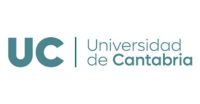has published in the editorial a paper in which have collaborated researchers from the University Hospital Marqués de Valdecilla and the University of Cantabria. The work has also been referenced in
. This reference marks a real milestone and points out the enormous interest and projection of the discoveries that have been made, which open up new therapeutic doors for a problem that currently only has complex invasive treatments.
Researchers belonging to the Valdecilla Hospital and the University of Cantabria, of the
IDIVAL Group Cytokines and growth factors in pathological tissue plasticity phenomena have collaborated in a study published last Monday in the prestigious journal Nature Medicine in which it is shown that the pharmacological inhibition of The NOS2 protein not only prevents pathological dilatation of the thoracic aorta in Marfan syndrome and other similar diseases, but is even capable of reversing it. The study was led by Dr. Miguel Campanero of the Alberto Sols Institute of Biomedical Research (CSIC) and Juan Miguel Redondo of the National Center for Cardiovascular Research (CNIC).
Researchers have discovered that the inhibition in mice of an arterial wall protein, inducible nitric oxide synthase or NOS2, is capable of reversing aortic disease in Marfan syndrome – characterized by aortic, skeletal and ocular abnormalities – and In other forms of aneurysm. The results of the study, published in the journal Nature Medicine, suggest an important role of NOS2 protein inhibitors for the treatment of thoracic aortic aneurysms. Therefore, researchers have already contacted the pharmaceutical industry to determine the efficacy of these drugs in clinical trials with Marfan patients, underscoring the translational nature of the research.
An aneurysm is an abnormal dilatation or widening of a portion of an artery due to a pathological weakness of the vessel wall that may progress to rupture. It is an indolent pathology, which for a long period of time causes minimal or no, but also virulent, symptomatology, since it can suddenly experience catastrophic, often fatal complications. These characteristics make it essential to have an early and accurate diagnosis, a rigorous follow-up and a treatment with surgery at the right time.
Because the risk of aortic rupture increases with the degree of dilation of the artery, current pharmacological treatments for these diseases, including Marfan syndrome, seek to reduce mechanical stress on the aortic wall by decreasing the energy of cardiac contraction and Blood pressure. However, these drugs do not prevent the structural deterioration of the aortic wall, so they are not very effective in preventing their rupture. Surgical treatment is the only really effective, but it is not harmless, so it is indicated when the risk of aortic rupture is greater than that of surgery. Moreover, it does not improve or stop the intrinsic problem of the aortic wall, which is progressive and is not confined to a specific anatomical segment. Therefore, it is essential to identify the mechanisms responsible for the degeneration of the aortic wall and to discover new pharmacological targets to favorably modify the natural evolution of these diseases.
Therapeutic targets
In the published work the researchers have analyzed the molecular mechanisms involved in the formation and progression of thoracic aortic aneurysm. In this way, they identified two possible therapeutic targets: the metalloproteinase ADAMTS1 and the nitric oxide synthase NOS2. The results demonstrate that Adamts1-deficient mice develop a disease similar to Marfan's syndrome and, more importantly, genetic or pharmacological inactivation of NOS2 prevents and reverses aortopathy in ADAMTS1-deficient mice and in mice with Marfan syndrome experimental.
Dr. Nistal, leader of the IDIVAL group who has collaborated on the project, explains: “This work represents a significant advance in our understanding of the underlying molecular pathology in Marfan disease and other related diseases, and opens up new and hopeful pathways The finding of regression of aortic dilatation in elderly animals and aggressive models of Marfan seems to me to be particularly relevant, because it provides us with pharmacological tools with an etiopathogenic basis that may allow to effectively address the treatment, not only of the More aggressive neonatal forms of the disease, but of patients of any age. For our group it has been a privilege to collaborate in a project of high scientific level and with a perspective of translational research”.
Application in humans will still require time
Dr. Hurlé, a researcher at the Department of Physiology and Pharmacology at the University of Cantabria and coauthor, warns: “We must be cautious when transferring the conclusions obtained in experimental animal models to human disease. However, the efficacy of NOS2-specific inhibitory drugs in reversing aortic dilatation in mice models encourages clinical trials for both the treatment of Marfan syndrome and other similar aortic diseases”.
Reference: Oller J, Méndez-Barbero N, Ruiz EJ, Villahoz S, Renard M, Canelas LI, Briones AM, Alberca R, Lozano-Vidal N, Hurlé MA, Milewicz D, Evangelista A, Salaices M, Nistal JF, Jiménez-Borreguero LJ, De Backer J, Campanero MR, Redondo JM. Nitric oxide mediates aortic disease in mice deficient in the metalloprotease Adamts1 and in a mouse model of Marfan syndrome. Nat Med. 2017 Jan 9. doi: 10.1038/nm.4266. [Epub ahead of print] PubMed PMID: 28067899.




















